Portugal is a small country on the Iberian Peninsula’s Atlantic coast. It is one of Europe’s most popular tourist destinations because of its stunning coastline and rich history. Because of its compact size, visitors can see more of the country in a shorter period of time than they would in a larger country like Spain.
Portuguese weather is mild enough to draw tourists all year, and the country’s many historical sites, including those from the Roman and Moorish periods, are popular destinations.
10. Alcobaca Monastery
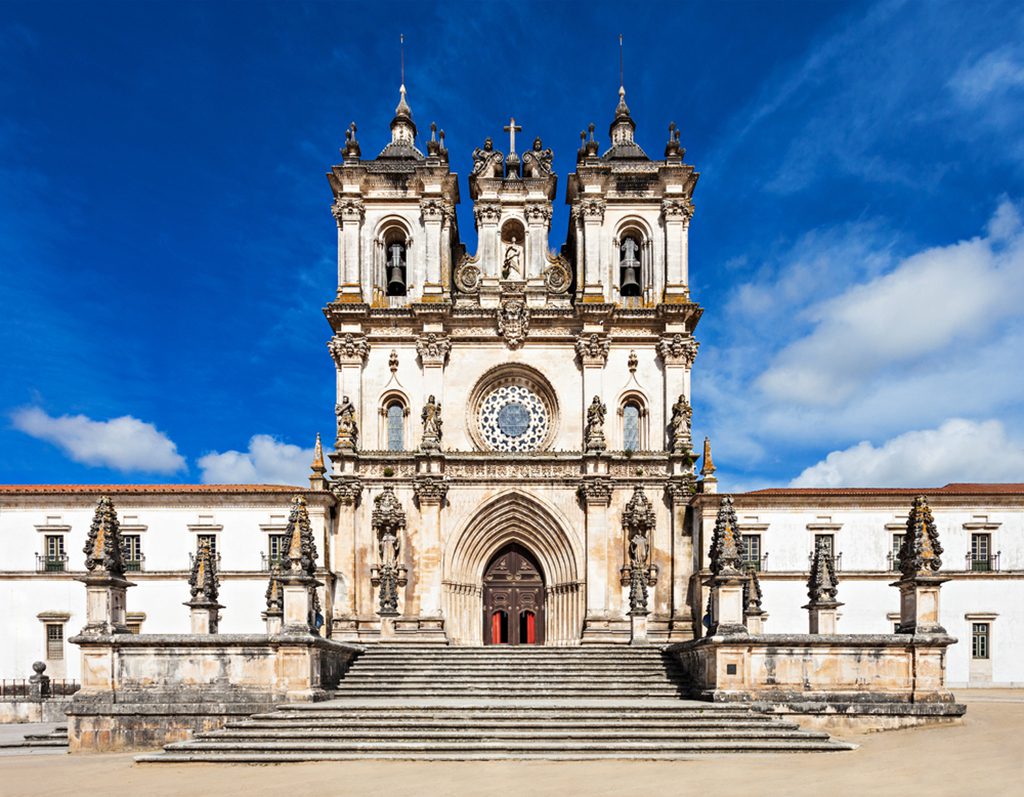
The Alcobaca Monastery is a Mediaeval Roman Catholic Monastery in Alcobaca, Portugal. Image source: saiko3p/Shutterstock.com
The town of Alcobaça, in the middle of Portugal, is home to a Roman Catholic monastery known as the Monastery of Alcobaça. It was established in 1153 by the first King of Portugal, Afonso Henriques, and has had a strong relationship with the Portuguese royal family ever since.
The church and monastery were the first Gothic buildings in Portugal, and today they are considered among the country’s most significant examples of medieval architecture.
9. University of Coimbra
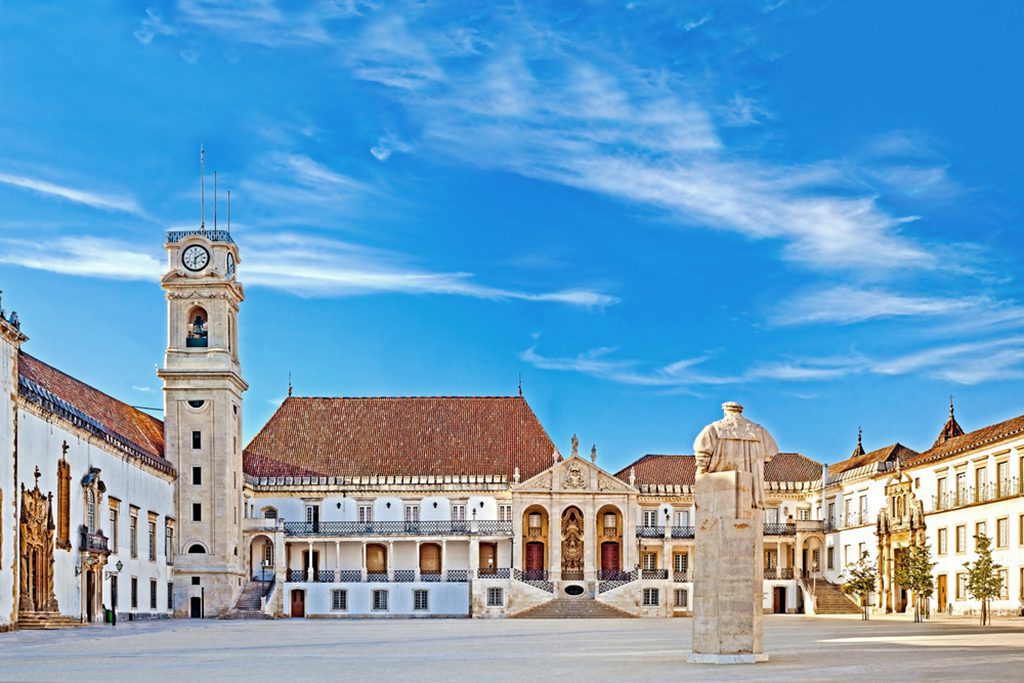
Coimbra university, Portugal. Image source: Pani Garmyder/Shutterstock.com
Since its founding in 1290, the University of Coimbra has remained open and has become one of Europe’s oldest and most prestigious higher education institutions. In addition to being one of the best universities in Portugal, it is also one of the biggest in Europe, with a total enrollment of almost 20,000. The university campus has a wide variety of interesting locations.
The Biblioteca Joanina is an outstanding example of Baroque architecture, having been constructed at the request of King Joao V in the early 18th century. Doctorates are presented in the Sala dos Capelos, the old throne room.
8. Capela dos Ossos
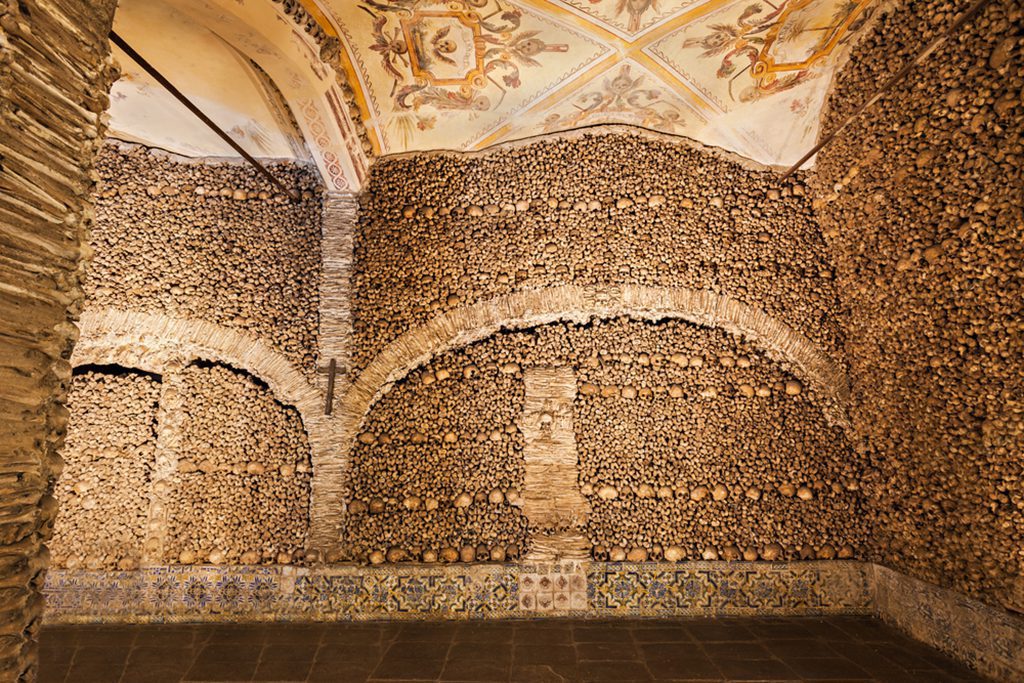
The Chapel of Bones is one of the best-known monuments in Evora, Portugal. Image source: saiko3p/Shutterstock.com
The Capela dos Ossos seems like something out of a horror movie, but it was really a practical solution to the problem of Evora’s overpopulation of graves, proposed by monks in the 16th century.
A unique chapel was built, appropriately named Bone Chapel, to house the human remains. It is a component of the Gothic St. Francis Church. A total of almost five thousand skeletons and skulls decorate the walls and ceiling of the chapel.
7. Cabo Girao
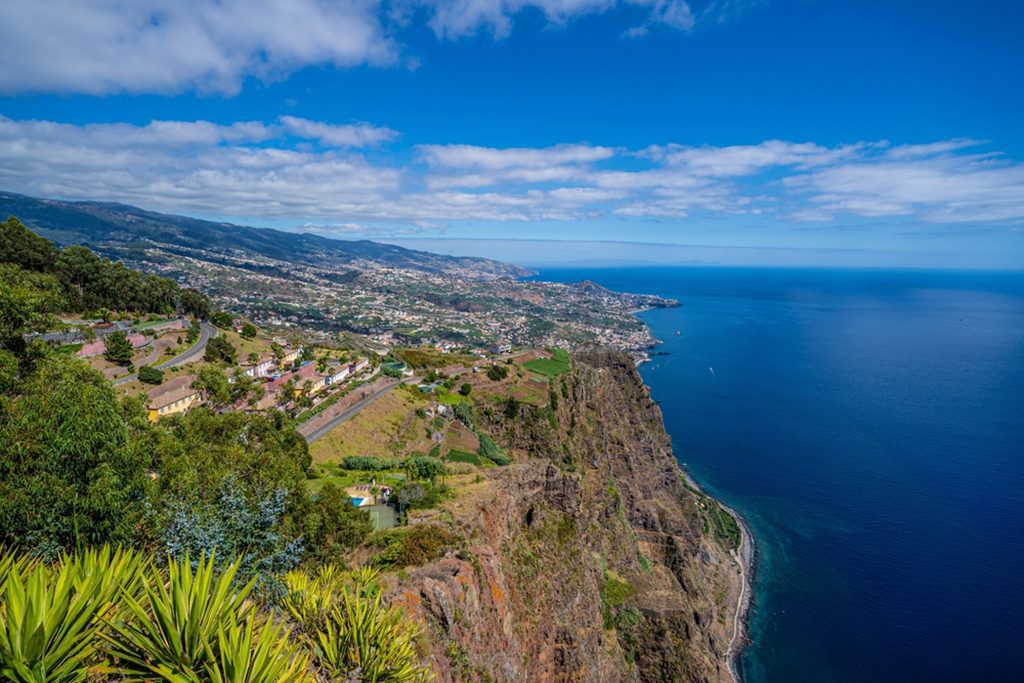
Cabo Girao Lookout on the island of Madeira. Image source: Fotostraka.cz/Shutterstock.com
South of Madeira’s southern coast is where you’ll find Cabo Giro, a Portuguese outpost in the Atlantic Ocean. Popular belief has it that this cliff is Europe’s highest sea cliff; however, at least three others are higher.
However, the view down the almost vertical plunge to the water is exciting. In 2012, a viewing platform with a glass floor was added, making the spectacle even more unsettling.
6. Sao Jorge Castle
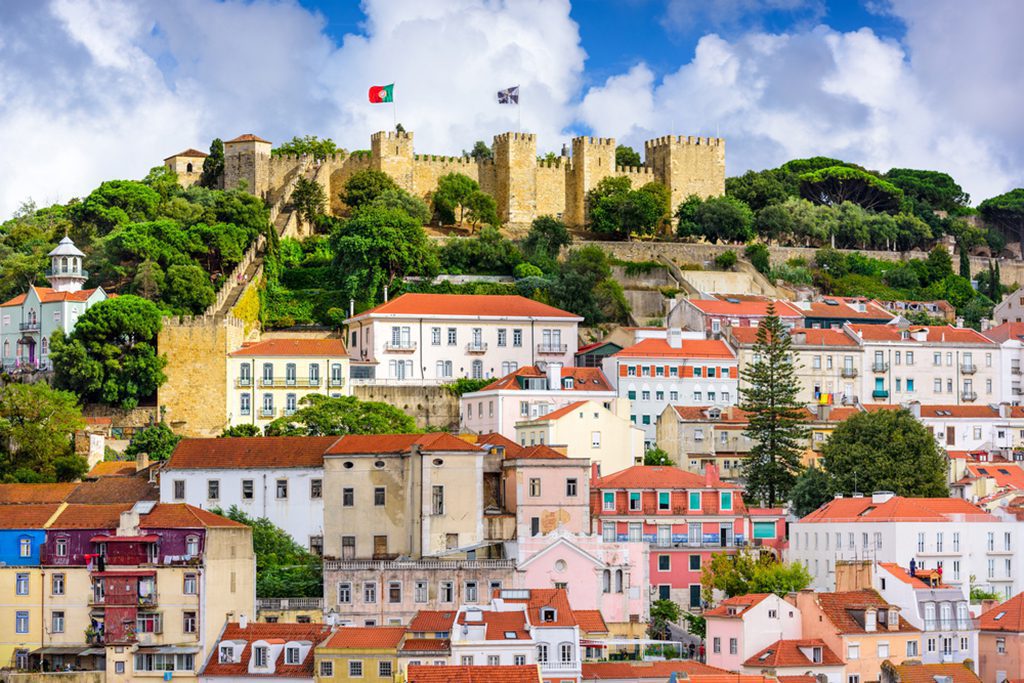
Lisbon, Portugal skyline at Sao Jorge Castle in the day. Image source: ESB Professional/Shutterstock.com
Since it is visible from all throughout Lisbon, the Castelo de São Jorge is a popular tourist destination. It was originally built by the Romans, but in the 10th century, the Moors reinforced the walls. During the Second Crusade’s Siege of Lisbon in 1147, the castle was taken back from the Moors.
This castle, which has been demolished and rebuilt several times, was the official residence of King Alfonso III in later centuries. Visitors can still see the walls and 18 of the towers today.
5. Obidos Castle
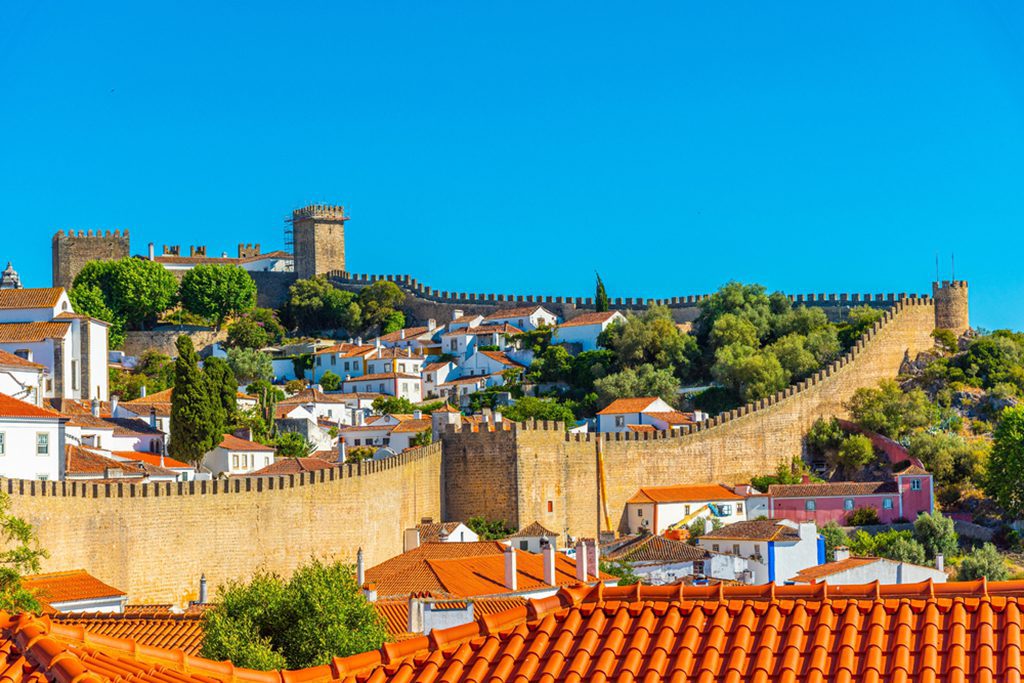
View of Obidos castle in Portugal. Image source: trabantos/Shutterstock.com
The impressive Obidos Castle can be found on a hill above Obidos, a small city on Portugal’s Atlantic coast that dates back to Roman times. The Moors built the castle probably in the eighth century.
It was rebuilt in the 14th century, and a keep was added. The castle presently houses a luxurious pousada hotel. A real medieval market takes place in the castle every July.
4. Cais da Ribeira
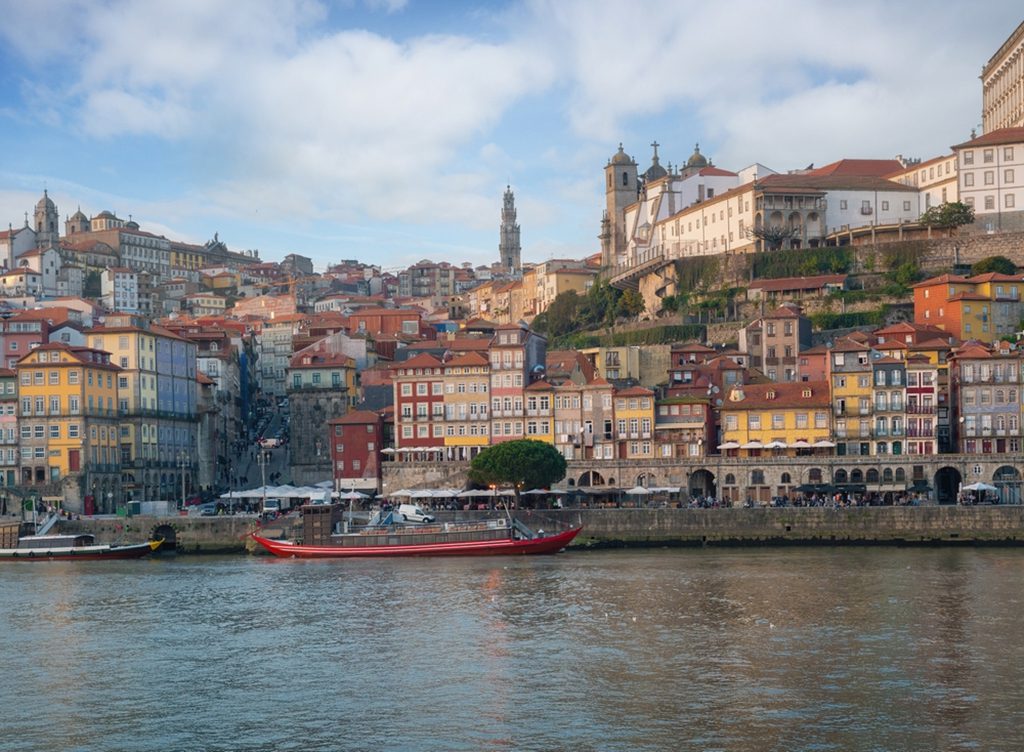
Porto Skyline, Cais da Ribeira and Douro River with Clerigos Tower and Se do Porto Cathedral, Portugal. Image source: Diego Grandi/Shutterstock.com
Cais da Ribeira is a lovely district in Porto that ends in a square right on the Douro River and is sometimes referred to as “the spirit of Porto.” Ribeira is well-known as a great spot to get a bite or a drink because of the many restaurants, cafés, and bars that can be found in its many medieval buildings.
On feast days, the whole community congregates at Ribeira to see the fireworks display. This square is centered on a bronze cube. Quite close by is the house where Prince Henry the Navigator was born in 1394.
3. Praia da Marinha
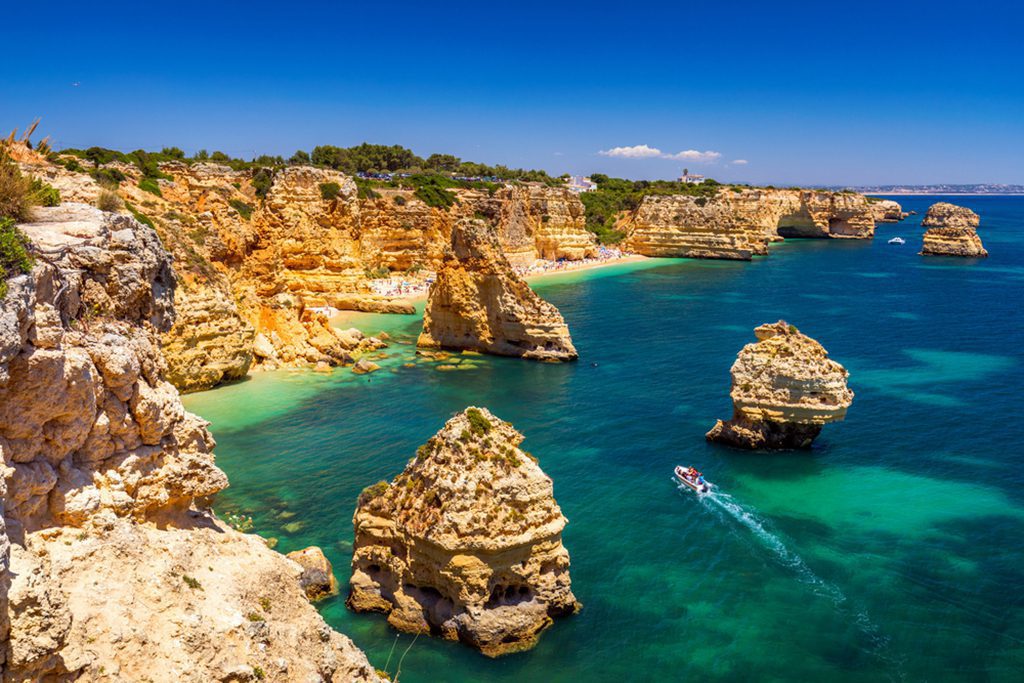
Praia da Marinha, beautiful beach Marinha in Algarve, Portugal. Image source: DaLiu/Shutterstock.com
Praia da Marinha is commonly considered one of Portugal’s best beaches. The beach, which can be found in the Algarve region of the Atlantic coast, is framed by blue waters on one side and by sandy beaches and steep cliffs on the other.
This small cove, also known as Navy Beach, is often included in tourism pamphlets due to its picturesque setting. With its pristine waters, this beach is ideal for snorkeling. The lovely beach can be reached in approximately 30 minutes from Albuferia, and parking is free.
2. Belem Tower
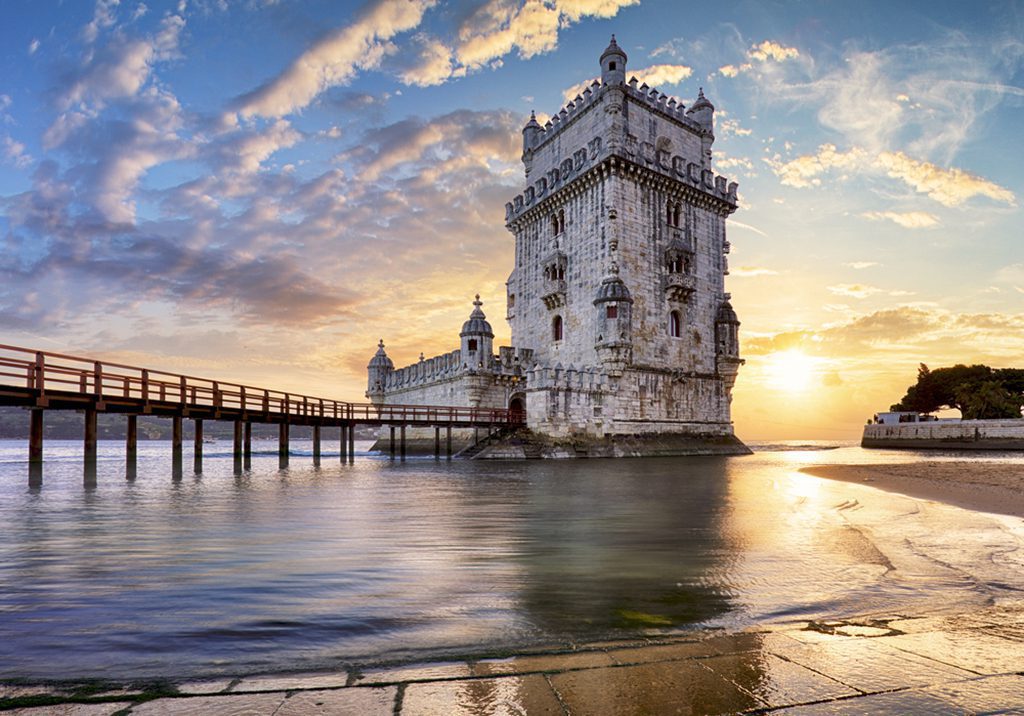
Lisbon, Belem Tower – Tagus River, Portugal. Image source: TTstudio/Shutterstock.com
Lisbon, the capital of Portugal, is located on the Tagus River, and on the site of what was formerly an island stands Belem Tower, also known as the Tower of St. Vincent. The tower dates back to 1515, and its dual use as a fortress and a greeting point for visitors has kept it busy ever since.
The four-story limestone tower dates back to the Age of Discovery, and it was outfitted with a bastion that housed 17 cannons capable of firing long-range projectiles. A statue of Our Lady of Safe Homecoming stands with her back to the river to watch over passing ships.
1. Pena National Palace
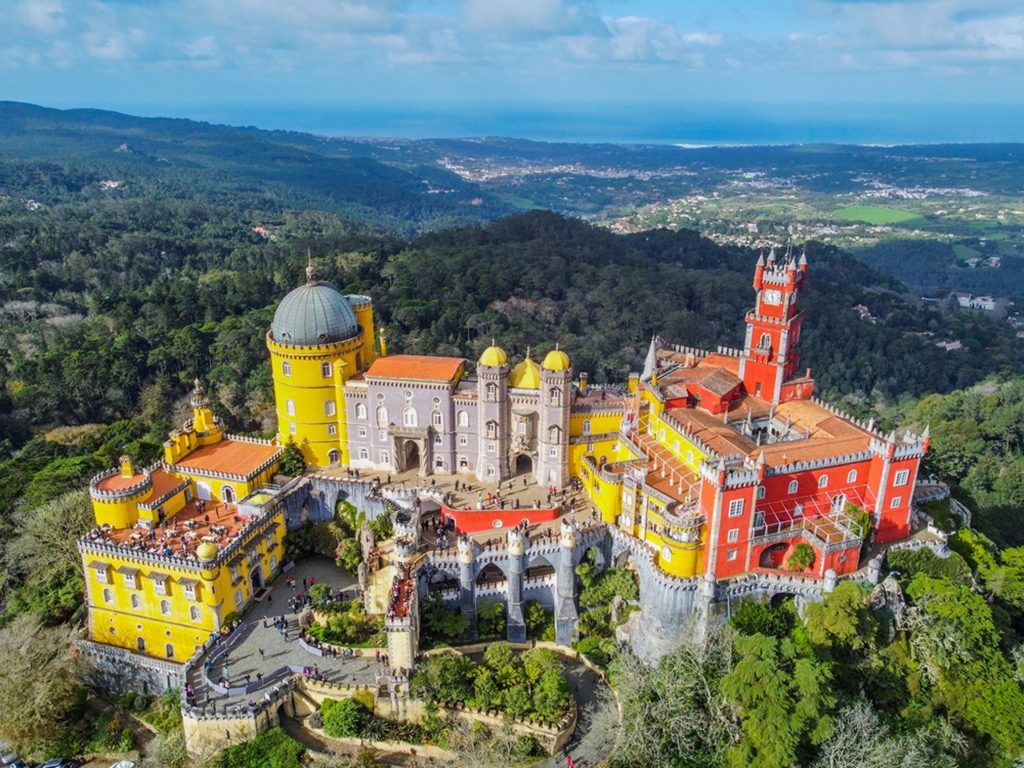
Pena Palace in Sintra. Lisbon, Portugal. Image source: Dzivinskyi/Shutterstock.com
On gloomy days, the Pena National Palace rises above the clouds like a castle from a fairy tale. However, it is located on a hill near Sintra and is visible from Lisbon on a clear day.
Built by King Ferdinand II, it is a stunning example of Moorish and Manueline architecture from the 19th century and around the world. The building dates back to the Middle Ages, when it served as a chapel dedicated to Our Lady of Pena, and is now utilized for official governmental events.


